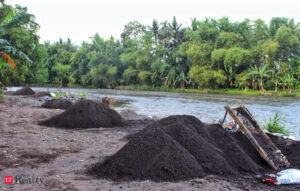NGT Orders Tamil Nadu to Revise Incomplete Coastal Maps for Fishermen’s Welfare, ET RealEstate

CHENNAI: National Green Tribunal (NGT) southern zone has directed the Tamil Nadu govt to revise its draft Coastal Zone Management Plan (CZMP) maps after finding them incomplete and ordered ground truthing verifying satellite data on the ground to accurately mark ecological zones and fishing areas critical for coastal communities.
Once revised, CZMP maps will be crucial for protecting ecological areas and ensuring sustainable livelihoods for coastal communities.
The tribunal’s order follows complaints from fishermen, who argued that the maps did not comply with the Coastal Regulation Zone (CRZ) Notification, 2019. The NGT noted missing details such as fishing zones, village boundaries, and fish breeding areas, which are essential for safeguarding coastal resources and planning sustainable development.
Applicants Jesu Rethinam and K Saravanan, representing the fishing community, pointed out that 105 maps for key districts such as Nagapattinam, Ramanathapuram and Villupuram omitted several other important ecological zones such as turtle nesting grounds, sand dunes, and mangrove buffers. They complained that proper long-term housing plans for fishermen were ignored, even as climate change and rising sea levels pose increasing threats.
In response, the Tamil Nadu Coastal Zone Management Authority (TNCZMA) argued that many of the components, such as fishermen settlements and sensitive ecological areas, were already included in the maps.
The authority noted that new features such as fishing harbours, evacuation centres, and health facilities were incorporated, compared to earlier CZMP maps under the CRZ Notification, 2011. It stated that any missing elements could be added later, based on inputs from relevant departments.
However, the tribunal directed the TNCZMA to collaborate with the National Centre for Sustainable Coastal Management (NCSCM), a Chennai-based research institute under the Union ministry of environment, to address the missing elements before finalising the maps.
The scale dispute was also addressed, with applicants calling for the mandated 1:4,000 scale for better accuracy, while the TNCZMA clarified that 1:25,000 scale maps were provided for consultation, with 1:4,000 scale maps to follow.









